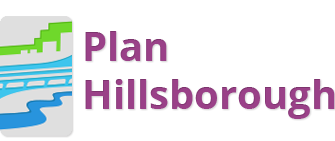September 2020 – Three workshops that are free and open to the public will be held virtually in October. They are being offered by the MPO for learning about and discussing managing lanes for transportation efficiency and fairness.
 The featured speaker will be Todd Litman, founder and executive director of the Victoria Transport Policy Institute, an independent research organization dedicated to developing innovative solutions to transport problems. His work helps expand the range of impacts and options considered in transportation decision-making, improve evaluation methods, and make specialized technical concepts accessible to a larger audience. His research is used worldwide in transport planning and policy analysis.
The featured speaker will be Todd Litman, founder and executive director of the Victoria Transport Policy Institute, an independent research organization dedicated to developing innovative solutions to transport problems. His work helps expand the range of impacts and options considered in transportation decision-making, improve evaluation methods, and make specialized technical concepts accessible to a larger audience. His research is used worldwide in transport planning and policy analysis.
Workshop 1 | Tuesday, October 13 | 5:30 – 7:30 pm | MPO Citizens Advisory Committee (CAC) Workshop | Register now
Workshop 2 | Wednesday, October 14 | 9:00 am – noon | MPO Board Workshop | At this workshop, Todd will be joined by the representatives from two public agencies to talk about the managed lanes in Northern Virginia/ DC and Los Angeles | Register now
Public comments are always welcome at CAC and MPO Board meetings, but members of the public will have an opportunity for Q&A directly with Todd at Workshop 3:
Workshop 3 | Monday, October 19 | noon – 1 pm | Planning Commission’s Info BBQ (Brown Bag Quarterly) sponsored by the MPO and brought to you in conjunction with the Sun Coast Section of APA Florida | 1 AICP CM credit pending | Register now
What we’ll be talking about:
Public highways are a scarce and valuable resource. New roadway management practices can increase efficiency and fairness. Efficient pricing means that users “get what they pay for and pay for what they get.” Currently, most public roads are unpriced: users do not pay for the congestion costs they impose on other vehicles, resulting in traffic congestion. Cities around the world are now using innovative management and pricing to reduce congestion and extract more economic value from public highways.
Efficiently priced High Occupancy Toll (HOT) lanes, with higher tolls during congested periods and discounts during off-peak periods, give travelers incentives to shift when and how they travel, from peak to off-peak period, and from automobiles to ridesharing and public transit. Efficient pricing ensures that high-value vehicle trips, such as freight and service vehicles, transit buses, and travelers with urgent errands, can avoid congestion delays. This increases the value provided by a traffic lane. If a portion of revenues are reinvested in public transit services, lower-income travelers also benefit from better, faster and more reliable bus travel. Public transit service improvements also benefit motorists by reducing the toll needed to achieve a given reduction in vehicle traffic volumes and therefore congestion delay; with poor quality public transit a $4 toll might be needed to achieve a 20% reduction in traffic volumes, but if transit service is convenient, comfortable and fast, a $2 toll can achieve the same impact because more travelers are willing to shift from driving to buses.
Of course, motorists often oppose paying to use roads that were previously free, but congested roads are not really free, travelers either pay with congestion delays or with money. High Occupancy Toll lanes are more efficient overall because they give travelers new options that they can use when necessary, like premium shipping charges or Internet services. They also generate revenues that can be invested to improve alternatives and benefit the community. Experience around the world indicates that public support tends to be low before the programs start, but increases after they are operating, once travelers experience the benefits.
Everybody wins with well managed lanes.
Background Research:
Brianne Eby, Martha Roskowski and Robert Puentes (2020), Congestion Pricing in the United States: Principles for Developing a Viable Program to Advance Sustainability and Equity Goals, Eno Center for Transportation (www.enotrans.org); at www.enotrans.org/eno-resources/enocongestionpricing.
EcoNorthwest (2019), Fair and Efficient Congestion Pricing for Downtown Seattle, Uber Technologies; at https://bit.ly/3c6oOB1.
This study analyzed the impacts of a daily toll that range from $0 between 11pm and 5am, $1.50 at midday, and up to $3.80 in the afternoon. A vehicle would be charged one toll per day for the most expensive hour the vehicle travels within the downtown area. The maximum charge any one vehicle would pay in a single day is therefore $3.80. The study predicts that this would reduce congestion delays by 30%, increase bus transit speeds by 4%, generate $130 million annual revenue, and provide $90 in travel time savings. The study finds that most tolls would be paid by higher income residents. To further increase equity the project could use up to $50 million per year of the net toll revenues, to provide rebates to moderate income downtown employees, low income households’ trips into downtown for critical purposes, and support the general mobility needs of low income Seattle households. For example, this could Seattle employees whose incomes are near or below the regional median a monthly e-purse starting at about $85, or about $1,000 per year.
Jonas Eliasson (2014), The Stockholm Congestion Charges: An Overview, CTS Working Paper 2014:7, Centre for Transport Studies (www.cts.kth.se); at www.transportportal.se/swopec/CTS2014-7.pdf. Stockholm Congestion Pricing (www.stockholmsforsoket.se/templates/page.aspx?id=183)
Starting in 2006 the city of Stockholm, Sweden, began charging vehicles entering the inner city area on weekdays between 6:30 a.m. and 6:30 p.m. 10 to 20 kronor (US $1.27 to US $2.54) per trip, with a maximum daily charge of 60 kronor (US $8.00). The system ran for seven months, and on 17 September 2006 Stockholm residents voted in favor of making the system permanent. Although initially considered “political suicide,” the program is now considered successful overall by experts, media and the general public (Eliasson 2014). It reduced traffic volumes by about 25%, removing 100,000 vehicles from the roads during peak business hours and increasing public transit ridership by 40,000 users per day. About 350,000 vehicles per day pay the fee, generating between 3,500,000 and 21,000,000 kronor (US $500,000 to $2.7 million) in daily revenue, not counting revenue from the 630 kronor (US $77) fee charged to those who forget to pay the tax. Retail sales in central Stockholm shops increased compared with the same month in 2005, including significant increases in grocery sales in central neighborhoods, which probably reflects increased purchases by area residents who are more likely to shop locally rather than drive to shop.
PDOT (2020), Pricing Options for Equitable Mobility (POEM), Portland Department of Transportation (www.portland.gov/transportation); at www.portland.gov/transportation/planning/pricing-options-equitable-mobility-poem.
This Community Task Force project developed a working draft report, Equitable Mobility Framework, to inform decision making and guide policy analysis around pricing strategies. It examines the potential of fair and efficient pricing of parking, roads and vehicle travel.
TRB (2020), Emerging Challenges to Priced Managed Lanes, NCHRP Synthesis 559, Transportation Research Board (www.trb.org), (https://doi.org/10.17226/25924); at www.nap.edu/download/25924.

